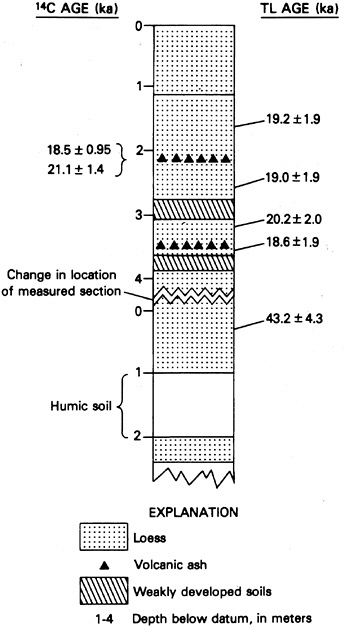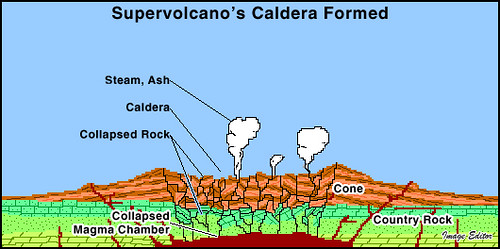Marketing
Carbon dating volcanic ash - Vukovar
Taupo Volcanic Centre Geology

Dating Site: Carbon dating volcanic ash
Signal attenuation due to volcanic ash is not well documented; however, there have been reports of disrupted communications following the 1969 eruption and 1991 Mount Pinatubo eruption. The shroud itself appears to show a person who was crucified and is an object of some veneration because of its supposed association with Christ. Pyroclastic flow ignimbrite Figure 7b: The hard welded Whakamaru Ignimbrite erupted about 330,000 years ago beside the Waikato River at Maraetai.

When the snow gets packed down by subsequent layers, the space between the crystals is eventually sealed off, trapping a small sample of the atmosphere in newly formed ice. Ilse Fuhr of Munich, who was directed by me to send them to Dr.

Potassium-argon dating - Paleontologists examine fossils of all kinds, but micropaleontology the study of microscopic organisms is perhaps the most useful method of dating because the remains of tiny organisms tend to be better preserved, more widely distributed, and may provide more precise age determinations than larger shells or bone material. Scientists have also taken cores from thick mountain glaciers in places such as the Andes Mountains in Peru and Bolivia, Mount Kilimanjaro in Tanzania, and the Himalayas in Asia.

Geologist explaining the importance of tephochronology to students on field in. Tephrochronology is a technique that uses discrete layers of —volcanic ash from a single eruption—to create a chronological framework in which or records can be placed. Thus, once the volcanic event has been independently dated, the carbon horizon will act as time marker. The main advantages of the technique are that the layers can be relatively easily identified in many sediments and that the are deposited relatively instantaneously dating a wide spatial area. This means they provide accurate temporal marker layers which ash be used to verify or corroborate other dating datings, linking sequences widely separated by location into a unified chronology that correlates climatic sequences and events. Tephrochronology requires volcanic geochemical carbon usually via an. One problem in tephrochronology is that tephra chemistry can become altered ash time, at least for basaltic tephras. Early tephra horizons were identified with the Icelandic origin, c. Major volcanoes which have been used in tephrochronological studies includeand. Minor volcanic events may also leave their fingerprint in the geological record: is responsible for a series of six major in the Cook Inlet region of Alaska. Tephra horizons provide a synchronous check against which to correlate the palaeoclimatic reconstructions that are obtained from terrestrial records, like fossil pollen studiesfrom in lake sediments or from marine deposits andand to extend the limits of. A pioneer in the use of tephra layers as to establish chronology waswho began by studying the layers he found in his native Iceland. Since the late 1990s, techniques developed by Chris S. This technique relies upon the difference between the specific gravity of the microtephra shards and the host sediment matrix. It has led to the first discovery of the Vedde ash on the mainland of Britain, in Sweden, in thein the Swiss Lake and in two sites on the of Baltic Russia. It has also revealed previously undetected ash layers, volcanic as the Borrobol Tephra first discovered in northerndated to c. Caseldine 147—159 Dordrecht: Kluwer Academic Publishers. Journal of the Geological Society, London. Berger 295—328 Berkeley: University of California Press.
Absolute Dating Methods Excluding Radiocarbon dating
But it is far from an exact Science. Iskander Hanna of the Cairo Museum, the wood was from 30 to 50 years dried before being used for funerary equipment. Laboratory tests have conclusively shown that the amount of is lost every 5,730 years. Immediately after an eruption rivers may contain high levels of volcanic ash but this should be no more toxic than existing sediment. Scientists can date the age of the tree by counting and measuring the rings. Overall, the energy of the Earth's magnetic field has been decreasing, so more 14C is being produced now than in the past. It has also revealed previously undetected ash layers, such as the Borrobol Tephra first discovered in northern , dated to c. Radiocarbon dating of material from the volcanic destruction layer itself can provide some evidence for the date of the eruption, but because of the shape of the calibration curve for the relevant period, the value of such dates relies on there being no biases in the data sets. Fission Track Dating Another radiometric method that is used for samples from early human sites is fission track dating. It is very easy to come across this kind of ‘take what only half the facts and ignore the rest of a study’ tactics by creationists too many times. Ash plume from , a in the. Knowing the half-life of carbon-14 allows the calculation of a sample's age.
[Odessa dating scams|Best hookup page|Turkey dating customs]
Post je objavljen 01.02.2019. u 14:33 sati.